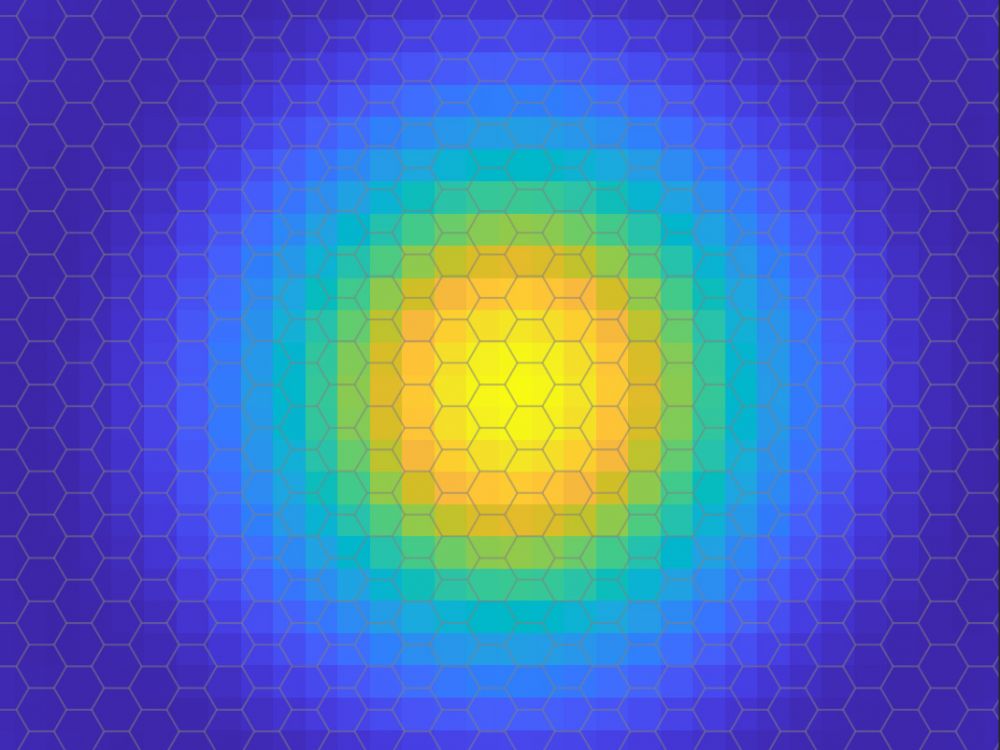
An image of an electron inside an exciton
Excitons are semi-particles corresponding to the excited states of matter. It is molded into semiconductor materials, and is used in many industrial applications such as solar panels or smartphones. For the first time in the world, scientists from the Okinawa Institute of Science and Technology (OIST) were able to calculate the moment of electrons, a parameter characterizing their rotation within these exciting states, and copying them into images. The results of their study are published in the journal Science Advances April 21, 2021.
Inside a semiconductor
Neither conductors nor insulators, semiconductors are materials that have a certain function at the sub-atomic level: in a conductor, the electrons of atoms are free to move around the material, thus forming an electric current. In a dielectric, the opposite is true, they are stuck inside their atom. In a semiconductor, the core is lukewarm: it is an insulator at “normal” times but even with a low energy input, some electrons are partially released and they can then conduct electrical current.
By lighting a semiconductor material, the electrons absorb the photons and the particles that make up the light, then increase their energy, moving from a low (constant) level to a high (excited) level. This energy input will allow them to partially free themselves from the grip of their original atom, leaving behind a negative charge deficit called a “hole”.
“Quasi-particles”
Discovered in 1931 but not directly observed yet, the term “exciton” refers to an excited state of matter, in the case of a semiconductor, a pair of electronic holes. This pair is designed by two “particles”: a negatively charged electron and a positively charged hole, which is more precisely a positively charged “space”. This pair of particles goes into an orbital once the electron enters the excitation state, but for a very short time, which makes any measurement complicated. The electron then returns to its original place inside the atom by emitting a photon, or it escapes completely from the atom. In fact, even with a minimal input of energy once the exciton is created, it will somehow decay.
Credit: OIST
Scientists discovered excitons about 90 years agoSays Professor Keshav Dani, Senior Author and Head of the Femtosecond Spectroscopy Unit at OIST. “But until very recently, one could only access the electron’s optical signature – the light emitted when the exciton disappeared. Other aspects related to it, such as its timing, or how the electron and the hole’s orbit., Were described only theoretically.”
“Excitons are single particles: they are electrically neutral, which means that they behave differently from the electrons in a material. Their presence can change the way a substance responds to light.” Dr Michael Mann, senior co-author and scientist in the Femtosecond Spectroscopy Unit at OIST explains. “This work brings us to a full understanding of the nature of excitons. “
Measuring the probability of an electron
On April 21, 2021, the team published a study in the journal Science Advances, a technique for measuring the moment of electrons within excitons. To achieve such a result, the team first created excitons using a laser pulse inside a two-dimensional semiconductor material, only a few atoms thick.
Once the excitons are formed, the researchers send out a laser beam containing extremely high-energy photons, which separate the holes from the electrons and expel the electrons from the material. An electron microscope is placed directly above the material and then measures the angle and energy of the electrons as they exit. Using this information, it is possible to reconstruct the original moment of the electron when it was still bound to the hole inside the exciton.
Credit: OIST
“It was not a small task”Professor Danny concludes. “The measurements had to be taken very carefully, at low temperatures and at low densities to avoid heating the electrons. It took us several days to get a single image.” Finally, the team measured the wave function of the exciton, which provides access to the probabilities of the electron being around the hole.
The electron probability cloud. Credit: OIST
This is because electrons are both waves and particles, quantum physics states that it is impossible to know their exact location, and only the probability distribution of existence can be calculated, as shown above. These works represent a tremendous advance in physics.Says Julian Maedo, co-senior author and researcher at the Femtosecond Spectroscopy Unit at OIST. “The ability to visualize the inner orbits of particles that belong to composite particles can allow us to better understand, measure, and control these composite particles. It can allow us to create new quantum states of matter, and techniques based on them. Concepts.”

“Organizer. Social media geek. General communicator. Bacon scholar. Proud pop culture trailblazer.”



